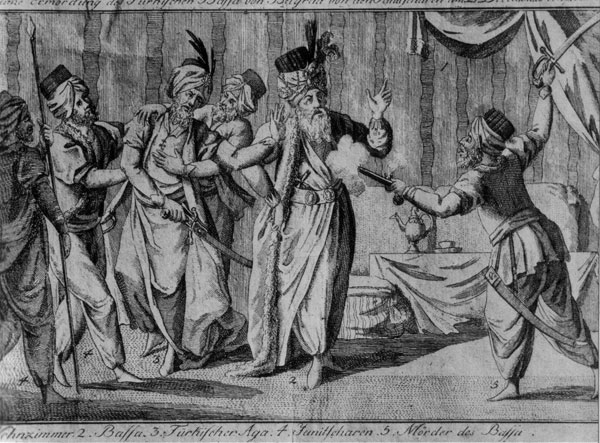|
Đorđe Čarapić
Đorđe Čarapić (1773-1826) was a voivode in the First Serbian Uprising and Second Serbian Uprising. He served both leaders – Karađorđe and Miloš Obrenović – during the war of Serbian independence from Turkey. When Miloš tried to impose his power over the Governing State Council, he met with stiff resistance from Đorđe Čarapić, a previous participant in Djak's Rebellion, and Mihailo (Mija) Belisavljević. The Čarapić-Belisavljević Rebellion was far more limited in scope than the previous one; it involved only a small circle of relatives, local leaders, and the peasants of some five villages. name=":0" References 1773 births 1826 deaths {{Improve categories, date=November 2020 First Serbian Uprising Second Serbian Uprising Serbian rebels ... [...More Info...] [...Related Items...] OR: [Wikipedia] [Google] [Baidu] |
Voivode
Voivode (, also spelled ''voievod'', ''voevod'', ''voivoda'', ''vojvoda'' or ''wojewoda'') is a title denoting a military leader or warlord in Central, Southeastern and Eastern Europe since the Early Middle Ages. It primarily referred to the medieval rulers of the Romanian-inhabited states and of governors and military commanders of Hungarian, Balkan or some Slavic-speaking populations. In the Polish-Lithuanian Commonwealth, ''voivode'' was interchangeably used with ''palatine''. In the Tsardom of Russia, a voivode was a military governor. Among the Danube principalities, ''voivode'' was considered a princely title. Etymology The term ''voivode'' comes from two roots. is related to warring, while means 'leading' in Old Slavic, together meaning 'war leader' or 'warlord'. The Latin translation is for the principal commander of a military force, serving as a deputy for the monarch. In early Slavic, ''vojevoda'' meant the , the military leader in battle. The term has als ... [...More Info...] [...Related Items...] OR: [Wikipedia] [Google] [Baidu] |
First Serbian Uprising
The First Serbian Uprising ( sr, Prvi srpski ustanak, italics=yes, sr-Cyrl, Први српски устанак; tr, Birinci Sırp Ayaklanması) was an uprising of Serbs in the Sanjak of Smederevo against the Ottoman Empire from 14 February 1804 to 7 October 1813. Initially a local revolt against Dahije, renegade janissaries who had seized power through a coup, it evolved into a revolution, war for independence (the Serbian Revolution) after more than three centuries of Ottoman rule and short-lasting Austrian occupations. The janissary commanders murdered the Ottoman Vizier in 1801 and occupied the sanjak, ruling it independently from the Ottoman Sultan. Tyranny ensued; the janissaries suspended the rights granted to Serbs by the Sultan earlier, increased taxes, and imposed forced labor, among other things. In 1804 the janissaries feared that the Sultan would use the Serbs against them, so they Slaughter of the Knezes, murdered many Serbian chiefs. Enraged, an assembly chose Ka ... [...More Info...] [...Related Items...] OR: [Wikipedia] [Google] [Baidu] |
Second Serbian Uprising
The Second Serbian Uprising ( sr, Други српски устанак / ''Drugi srpski ustanak'', tr, İkinci Sırp Ayaklanması) was the second phase of the Serbian Revolution against the Ottoman Empire, which erupted shortly after the re-annexation of the country to the Ottoman Empire in 1813. The occupation was enforced following the defeat of the First Serbian Uprising (1804–1813), during which Serbia existed as a ''de facto'' independent state for over a decade. The second revolution ultimately resulted in Serbian semi-independence from the Ottoman Empire. The Principality of Serbia was established, governed by its own parliament, constitution and royal dynasty. ''De jure'' independence, however, was attained in 1878, following the decisions of the Congress of Berlin. Background The First Serbian Uprising liberated the country for a significant time (1804–1813) from the Ottoman Empire; for the first time in three centuries, Serbs governed themselves without the su ... [...More Info...] [...Related Items...] OR: [Wikipedia] [Google] [Baidu] |
Karađorđe
ƒêorƒëe Petroviƒá ( sr-Cyrl, –Ç–æ—Ä—í–µ –ü–µ—Ç—Ä–æ–≤–∏—õ, ), better known by the sobriquet Karaƒëorƒëe ( sr-Cyrl, –ö–∞—Ä–∞—í–æ—Ä—í–µ, lit=Black George, ; ‚Äì ), was a Serbian revolutionary who led the struggle for his country's independence from the Ottoman Empire during the First Serbian Uprising of 1804‚Äì1813. Born into an impoverished family in the ≈Ýumadija region of Ottoman Serbia, Karaƒëorƒëe distinguished himself during the Austro-Turkish War of 1788‚Äì1791 as a member of the Serbian Free Corps, a militia of Habsburg and Ottoman Serbs, armed and trained by the Austrians. Fearing retribution following the Austrians' and Serb rebels' defeat in 1791, he and his family fled to the Austrian Empire, where they lived until 1794, when a general amnesty was declared. Karaƒëorƒëe subsequently returned to ≈Ýumadija and became a livestock merchant. In 1796, the rogue governor of the Sanjak of Vidin, Osman Pazvantoƒülu, invaded the Pashalik of Belgrade, and Karaƒëorƒëe foug ... [...More Info...] [...Related Items...] OR: [Wikipedia] [Google] [Baidu] |
.png)

